Content
Nevertheless, if you spend enough time doing this, after a while you start to become… familiar… with the data. You start to get an intuition for when it might be wrong, and what kind of data points to expect. You start to get a feel for what queries you need to run to check certain facts or to assess correctness. Do it long enough, and you might start to feel like you understand the actions and intent behind the market data that you are seeing. The greater the market depth, the smaller the market impact of a large market order, and thus less likely the chance of the price being manipulated. You can place orders at a specific prices To buy – click the cell at a price you want in the left column, to sell – in the right one.

The split in the middle represents the price during the latest trade. Market depth is a derivative of all the orders that populate a security’s order book at any given point in time. Conversely, sell walls represent a large number of sell orders set above the current price. High sell walls may indicate that traders do not believe an asset will surpass a certain price, while low sell walls indicate the opposite. The ask/sell-side of the depth chart is the same concept, just flipped. The vertical axis shows the total accumulated value of the number of Bitcoins being sold at each price increment along the horizontal axis. Since you have made it this far, you probably already understand the relationship between supply and demand. But for the readers who need a little help on this topic, I’ll give a brief and basic breakdown concerning the crypto markets. DSC Market DepthOn the left side in green we have bids/buy orders which are displayed between a range of prices located on the x-axis. On the right side we have ask/sell orders which are displayed in red with their respective values on the x-axis.
Understand The Market Depth Charts In Trading
This order flow is also referred to as market depth and displays the best bids. In this post, we’ll discuss what level 2 trading is, and how to understand a stock depth chart to aid in your trading. For example, an asset may have only a few orders within the current price and many orders at a much higher or lower price. While the asset will have an increased number of orders and thus high liquidity, it will not be considered to have market depth since a large enough order can easily swing the asset’s price. Market depth refers to the ability of a market to absorb large enough orders on both sides. While liquidity and volume of the asset are used to calculate the market depth, the terms are a bit different, albeit interconnected. Consequently, markets also allow price discovery to occur—stocksgo up and down because of the ever-changing price that market participants are willing to trade them at. In this article, we look at what market depth is, how it works, and how to read and use market depth data—regardless of your trading or investing strategy.
Islanders depth chart 1.0: Can they pull off any trades or signings to fill holes? – The Athletic
Islanders depth chart 1.0: Can they pull off any trades or signings to fill holes?.
Posted: Fri, 15 Jul 2022 19:39:17 GMT [source]
The spread is defined as the distance in price between the best bid and best ask. This is a perpetual future that has the Tether stablecoin as the underlying, quoted in regular USD on FTX. What I like about it is that it too has the similar hypnotic properties of the depth chart, but with even more context. Also, the rolling valley it creates in cumulative mode gives me some of that early 2000’s OpenGL heightmap nostalgia that is hard to find these days. There should have been a video here, but your browser does not seem to support it.Because the changes happen so fast, it can be hard to tell what actually occurred as it flicks past. In order to do that, we need the ability to see the changes as they happened, preferably in a timeline. We can do this by continuously taking snapshots of the current order book state, and lining them up side by side to form a two-dimensional image. The size is then represented by the color/intensity of the pixel in the image.
Tight and Wide Spreads
But essentially, as the lines grow or shrink, it may help provide you with a bias as to the short term direction of the market. Each side of the depth chart is a visual representation of all the kinds of bid and ask orders that people have set up in advance. And the charts are cumulative in how they display and plot the line on each side. Coinbase Pro features https://www.beaxy.com/market/btc/ more professional level charts, including the order book/history of orders, candlestick charts, and depth charts. He has over 18 years of day trading experience in both the U.S. and Nikkei markets. On a daily basis Al applies his deep skills in systems integration and design strategy to develop features to help retail traders become profitable.
Consider the order book information in the image below, which displays the current bid-ask spread on the left, along with the market depth on the right. Market Depth Charts display bid and ask data for a particular asset at different prices. This visualization of supply and demand turns order book data into a chart that’s both easy and fast to read. This kind of chart has been available to stock and commodity traders for quite some time in this modern age of digital trading and analysis.
Investors were drawn to the stock after the announcement as trading volumes surged. The actual trading volume was higher on the day when the price surged compared to the trading volumes during the last few trading sessions. Large traders are usually more influential on the market than small traders. On one hand, they can use their weight to move the market in the desired direction. On the other hand, they have the challenge to execute or manage large orders due to liquidity constraints. Because of this, they try to keep their activity undetected – to mask the fact that this activity belongs to a single trader.
- In mathematical sense, it plots price over the expiration month of the product.
- The vertical axis shows the total accumulated value of the number of Bitcoins being sold at each price increment along the horizontal axis.
- This implies that if the best bid and ask rise to 2745, resistance can be expected.
- This makes it a valuable supplement to all the additional technical indicators that traders use.
The palette attribute defines a custom palette for the highest and lowest buy prices, respectively . Provide a string of two comma separated color, HEX, or RGB values. The first value represents the high buy prices and the second value represents the low buy prices. To understand how DOM trading works, we will refer to Apple’s stocks. All algorithms I have seen will wait literally forever to buy or sell at their best price. Only if other parameters change that cause them to re-evaluate the price will result in a price change. Ultimately an algorithm is just a trader’s ‘recipe’ written down and implemented in a computer program. Imagine you went to a flea market where there was a bunch of the same objects on the table. One one side you had more than two people all willing to sell the same object, and on the other side you had people standing there willing to buy at a certain price.
What are the numbers on a marine chart?
One of my favourite bits of data has to be level 2 order book data. Not only because how to store it is an industry favourite interview question, but also because this series of numbers provides a window into the intent of the whole market. Anyone who wishes to make an impact on the market, must go through the arbiter that is the order book. As orders flow in and out of the market and trading occurs, the depth charts automatically update. These changes are animated, drawing your attention to the changes taking place. O is short, but you can see that the level 2 order flow at the resistance level picks up and the asking price continues to spike higher as sellers look for higher prices to execute trades. This gives you an indication of how many orders may be stacking up at certain levels. This L2 data can then be used to make informed trading decisions based upon key levels.

Also, you will notice how the order flow accelerates at the breakout level and most importantly the price is able to hold this key level. Often, it is the price reaction coupled with the level 2 stock data that gives you the best picture. At this point, we have discussed the structure of Level 2 data, but now it’s time to see it in action. In the below video we have taken a one-minute snapshot view of the order flow for the QQQ. Since people can choose at which price they buy or sell, it is common for a single stock to have multiple orders at varying price points.
A higher buy wall means more pending buy orders exist at a certain price. High buy walls can also indicate that traders believe an asset will not fall below a certain price. The Depth Chart is available for monitoring both cryptocurrency and futures instruments. As Micro Bitcoin Futures gain popularity, futures and cryptocurrency traders can both benefit from this tool. If you want to learn how to be successful with trading and investing in the cryptocurrency markets, you need to invest in yourself and learn how to do it right. When looking at the $16,200 bid price, there are currently 275 bid orders of this size stacked on top of each other.
Clients must consider all relevant risk factors, including their own personal financial situation, before trading. Trading foreign exchange on margin carries a high level of risk, as well as its own unique risk factors. The market depth chart is the visual representation of the orders and their respective size. The color of the graph in the market depth chart will match the color of the bid/ask data.
In my experience, I have found that looking at the higher time frames gives the clearest signal and is also the most accurate when figuring out where the markets are going. The video introduces you to display options, drawing tools, indicators, customization, and more that are available within charts on Fidelity.com. Watch this video to learn how to interact with the robust charting capabilities on Fidelity.com to explore for stock analysis. Read more about eth dollar calculator here. So, for example, if you’re marking the price at $9,500, then your mark for 100 bitcoin would line up with the $950k mark on the USD side of the vertical axis.
Meanwhile, securities with poor depth could be moved if a buy or sell order is large enough. Market depth refers to the market liquidity for a security based on the number of standing orders to buy and sell at various price levels. As you likely noticed from the previous example the Depth Chart may look lopsided to either the buy or sell side. This can be an indication of more bullish market sentiment if the buy-side is larger, or more bearish sentiment if the sell-side is higher. Sometimes a price chart and a depth chart may be out of agreement. For example, the price chart might look bullish, but there is a large accumulation of book data on the sell side of the Depth Chart. Once you know how to analyze this market and execute a winning trading strategy, the sky will be the limit for you. Or even alternatively, when trends meet points of resistance or support. But in my experience, the depth chart would always be one of the last things I would look at after gauging the chart’s candlestick patterns and my preferred technical indicators. For example, different supply or demand curves that materialize may be interpreted differently by traders.
Which candle is best for intraday?
The shooting star candlestick is primarily regarded as one of the most reliable and one of the best candlestick patterns for intraday trading. In this type of intra-day chart, you will typically see a bearish reversal candlestick, which suggests a peak, as opposed to a hammer candle which suggests a bottom trend.
For example, suppose stock A is trading at $8.50, and the market depth data indicates a massive cumulating of sell orders at $8.75. It is unlikely the price will break out above it, making it an excellent potential resistance level. For real-life markets, a similar table exists known as the market depth chart. It combines all the current orders to show an overall view of the order volumes and prices. Real-time market depth data allows traders to profit from short-term price volatility. Market depth refers to a market’s ability to absorb relatively large market orders without significantly impacting the price of the security. Market depth considers the overall level and breadth of open orders, bids, and offers, and usually refers to trading within an individual security. Though not often used in futures trading, cryptocurrency traders consider the depth chart a mainstay in determining market sentiment. This decrease in available information can affect the willingness of participants to add to market depth. In finance, market depth is a real-time list displaying the quantity to be sold versus unit price.
Which timeframe is best for intraday?
One to two hours of the stock market being open is the best time frame for intraday trading. However, most stock market trading channels open from 9:15 am in India. So, why not start at 9:15? If you are a seasoned trader, trading within the first 15 minutes might not be as much of a risk.
It gives a visualization of demand or supply of a particular stock or commodity or a cryptocurrency. Today, we’ll try to understand why these depth charts are needed and how to read them. Most cryptocurrency exchanges provide depth charts where users can hover over any point on the bid or ask line and see how many buy or sell orders are placed at that price. Level II market data shows multiple bid and ask prices from Nasdaq for any given security so investors can better determine the availability or desire for a security at a certain price. For Nasdaq, bids are functionally equivalent to limit buy orders that other investors have open on the markets. Similarly, asks are functionally equivalent to limit sell orders from other investors. Like any limit order, each bid and ask is represented by the price and quantity of the order. Some traders might only look at the candles and watch the price action, while others add indicators or look at the liquidity in the order book and depth chart, etc. Bitcoin depth chart, the cumulative value of the sell orders is extended to respond to the dollar values on the left axis. However, the values of the x-axis, while valued in the same currency, do not always portray the same values.



